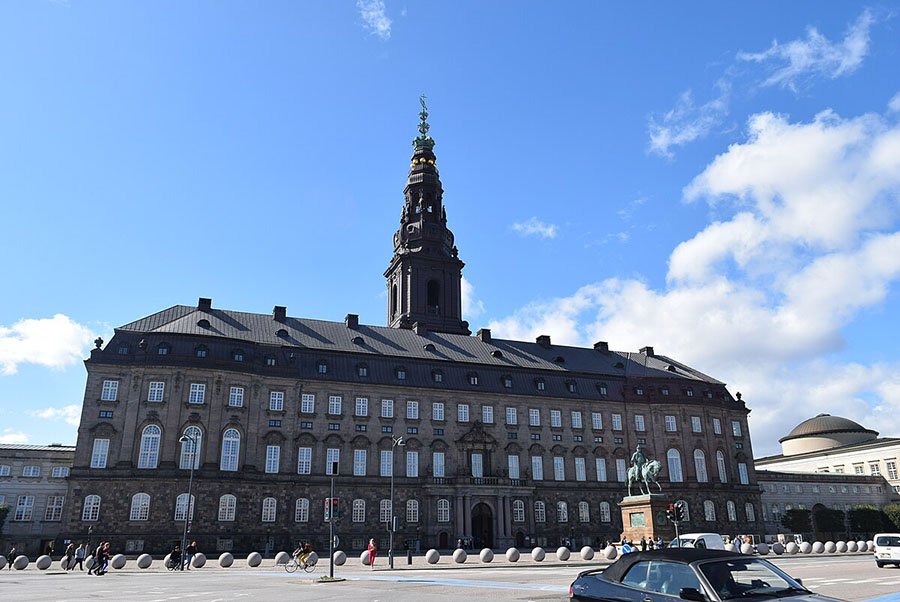Most Ukrainian Refugees Reside in Germany, Poland, and the Czech Republic
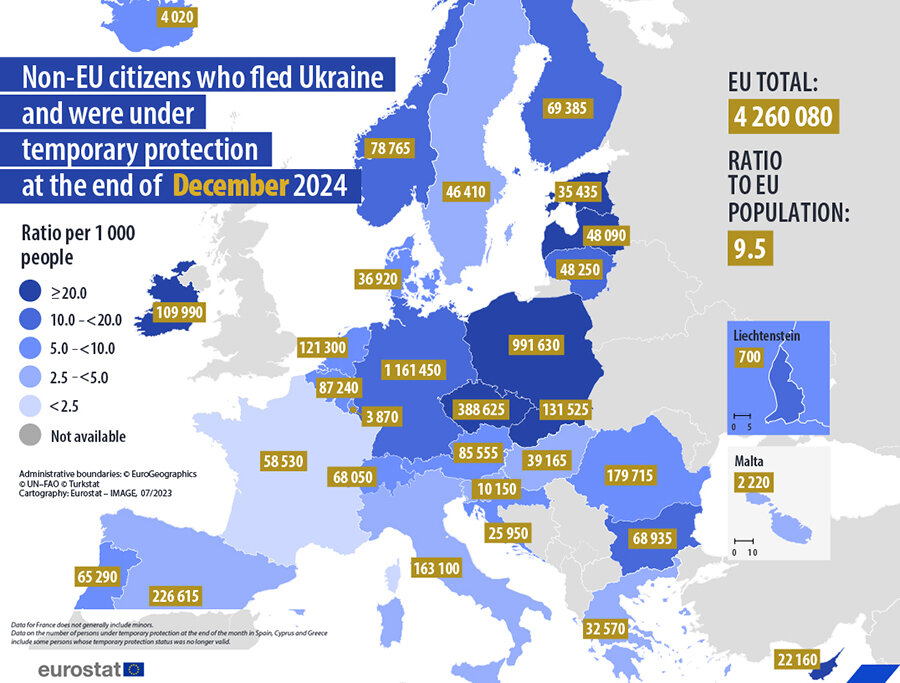
As of December 31, 2024, nearly 4.3 million non-EU nationals who fled Ukraine due to the ongoing war held temporary protection status, according to Eurostat. Germany, Poland, and the Czech Republic lead in the number of accepted refugees. Meanwhile, several countries have tightened their regulations on Ukrainian stays, reducing benefits and imposing restrictions, including Germany, Ireland, and Norway. Similar measures are under discussion in Slovakia.
Temporary Protection in the EU
Experts remind that temporary protection for displaced persons from Ukraine was established under the EU Council Implementing Decision 2022/382 of March 4, 2022. This status grants the right to reside, work, receive medical assistance, and access social benefits. However, the level of support varies across EU member states.
By early 2025, Germany had granted temporary protection to 1,161,450 people, accounting for 27.3% of all Ukrainian refugees in the EU. Poland followed with 991,630 (23.3%), and the Czech Republic ranked third with 388,625 (9.1%).
Compared to the end of November 2024, the total number of people under temporary protection in the EU increased by 25,590 (+0.6%) in December, with the largest absolute growth in:
Germany – +8,830 (+0.8%)
Poland – +3,705 (+0.4%)
Czech Republic – +3,435 (+0.9%)
At the same time, some countries recorded a decline in temporary protection holders, including:
Denmark – -1,995 (-5.1%)
Italy – -1,310 (-0.8%)
France – -595 (-1.0%)
Relative to the population of each EU country, the highest number of temporary protection holders per 1,000 residents was recorded in:
Czech Republic – 35.7 per 1,000
Poland – 27.1 per 1,000
Estonia – 25.8 per 1,000
The EU-wide average was 9.5 per 1,000 residents.
As of December 31, 2024, Ukrainians accounted for over 98.3% of those granted temporary protection in the EU. Nearly half of them were women (44.8%), 31.9% were children, and 23.2% were men.
According to UN data, as of January 16, 2025, Europe had over 6.3 million Ukrainian refugees, while the global number exceeded 6.8 million. Poland, Russia, Germany, and the Czech Republic led in hosting the most displaced Ukrainians. Spain, Bulgaria, and Italy also reported significant numbers.
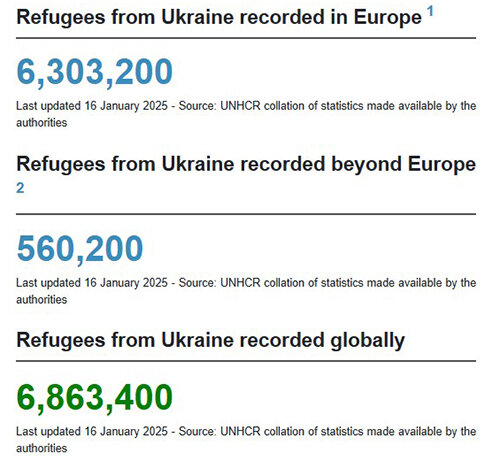
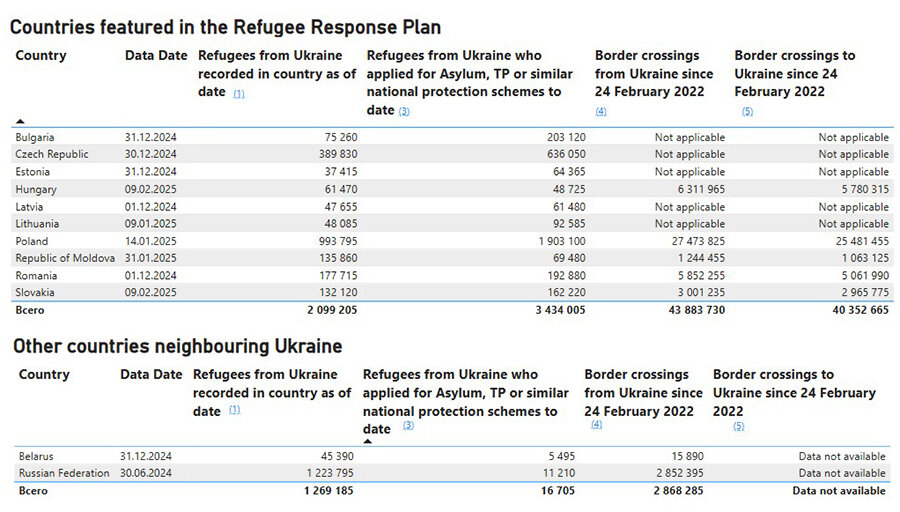
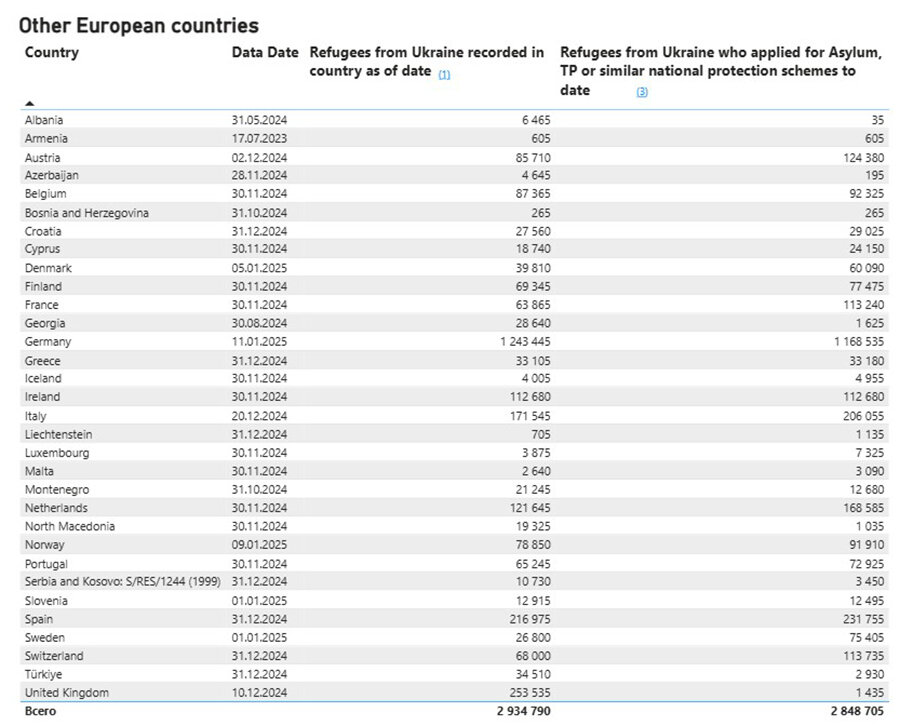
Changes in Ukrainian Refugee Regulations Across the EU in 2025
The Visit Ukraine portal reports that the EU has extended the Temporary Protection Directive for Ukrainians until March 2026. However, some countries have reduced social benefits or introduced new restrictions.
Germany – Reduction in Bürgergeld Payments
Germany has cut Bürgergeld benefits for employable refugees by 30% for three months if they refuse a job offer. Authorities argue that high social benefits discourage refugees from seeking employment. The country currently hosts about 700,000 working-age Ukrainian refugees.
United Kingdom – Visa Extensions
Visas for Ukrainians who arrived after February 24, 2022, will be extended for 18 months. Applications opened on February 4, 2025, and must be submitted 28 days before the current visa expires. Processing takes up to 8 weeks, during which applicants cannot leave the UK but will retain their legal status and associated rights.
Poland – Introduction of the CUKR Residence Card
Ukrainian refugees with Pesel UKR status as of March 4, 2024, can now obtain a CUKR residence card, allowing them to live and work in Poland for three years. However, they cannot leave Poland for more than six months at a time.
Lithuania – Free Public Transport Extended
Vilnius City Council has extended free public transport for Ukrainian refugees for another year. Since March 2022, this benefit has been in place across major Lithuanian cities. As of early 2025, 34% of Ukrainian refugees in Lithuania are officially employed.
Latvia – Extension of State Assistance
In November 2024, Latvia extended state support for Ukrainian refugees for another year, allocating €65 million from the budget. Additionally:
The temporary residence period increased from 2 to 3 years.
One-time crisis assistance payments rose to €377 for adults (+€34) and €264 for children (+€24).
Housing and food subsidies remain available for vulnerable groups.
Free essential medications will continue to be provided.
Czech Republic – New Long-Term Residency Permit
Starting in mid-2025, Czechia will introduce a new type of long-term stay permit (dlouhodobý pobyt), valid for up to 5 years with full labor market access.
This permit will be available to Ukrainians who have worked in the country for at least two years and meet financial criteria. Families applying together will undergo additional financial checks.
Ireland – End of Free State-Provided Housing
From March 2025, newly arriving Ukrainian refugees will no longer be provided with free state housing. The first to be affected will be those who have been housed the longest.
The government reduced social benefits in late 2024 and limited free accommodation for new arrivals to 90 days. As a result, the number of Ukrainians in state shelters fell from 58,830 to 35,833.
Norway – End of Automatic Asylum for Ukrainians
Norway announced changes in asylum policy. Applications from Ukrainians from western regions (Lviv, Volyn, Ivano-Frankivsk, Ternopil, Rivne, Zakarpattia) will now be reviewed individually, rather than granted automatically.
Norway has taken in 85,000 Ukrainian refugees since the war began but now seeks to reduce its intake compared to other Nordic countries. Additionally:
Refugees opting out of reception centers will lose financial assistance.
Support for pet ownership has been discontinued, and pets are now banned in reception centers.
Young Ukrainians (19-24 years old) must live in Norway for 5 years to qualify for free dental care.
Monthly benefits for childless couples were cut by NOK 6,000 ($576).
These measures aim to reduce the number of Ukrainian refugees in Norway.
Slovakia – Plans to Reduce Refugee Support
Slovakia is preparing significant reductions in assistance for Ukrainian refugees arriving after February 2025. New rules will shorten shelter stays and cut financial support, though vulnerable populations will remain protected.
With these changes, 2025 will bring stricter regulations for Ukrainian refugees in multiple European countries, shaping new challenges for those seeking asylum and protection.










